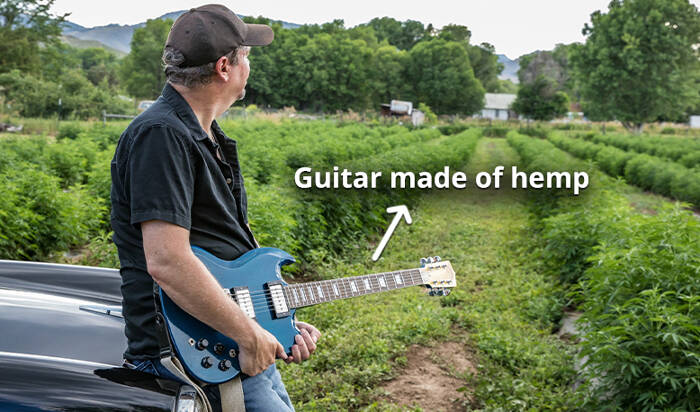Are America’s Hemp Farmers Being Unfairly Penalized Because of the Government’s Worries Over THC?
Specifically, the federal government is ramping up its enforcement of the maximum THC level allowed in hemp. That maximum is 0.3 percent of THC short for Tetrahydrocannabinol, the psychoactive compound in marijuana. Low THC in other cannabis strains is a element of hemp, a crop has been officially legal since the 2018 Farm Bill.
But no one’s taking the farmers’ word for it. At harvest time, growers must have their hemp crops tested and report those that are “hot,” meaning that they exceed that 0.3 percentage and must be destroyed on pain of federal penalties.
“Last year [2018] in the 16 states that shared their data with Stateline [a publication of the public policy organization Pew Charitable Trusts], 4,309 acres of hemp out of more than 179,000 acres planted were destroyed,” the publication wrote in February.
Pew’s report had limitations; it was based on only 16 of the 23 states with hemp cultivation in 2018. Yet even that 4,309 acres constituted an expensive and unnecessary loss, argues hemp activist Morris Beegle of Fort Collins, Colo. “We are criminalizing farmers because of nature, because of this restrictive, 0.3 percent,” Beegle told LeafReport in an interview last week.
“[Farmers’] intention is not to grow marijuana, it’s to grow hemp that’s going to be used for therapeutic products like dietary supplements, for food or for fiber in industrial ingredients and products,” Beegle said.
And after all, hemp was legalized by the 2018 Farm Bill, which is still in the process of finalizing that 0.3 percent THC regulation that has been the unofficial recognized maximum of the states’ hemp pilot programs instituted by the 2014 Farm Bill. That 0.3 percentage puts U.S. farmers at a disadvantage to other nations’ THC legal maximums, which include a soon-to-be 1 percent regulation in neighboring Mexico, and 1 percent in both Uruguay and Thailand.
Beegle, who is president and co-founder of WAFBA.com (We Are For Better Alternatives), an umbrella group in Colorado for exposition brands, a hemp guitar brand and a paper and printing brand, advocates a ceiling of at least 1 percent.
That view is shared. “The American Farm Bureau supports THC for hemp up to 1 percent; that was passed by our delegate body,” the Bureau’s director of congressional relations, Scott Bennett, said in an interview. VoteHemp.org, an activist group has posted a petition on its website to attain the same goal.
Yet it would take an act of Congress to actually modify the Farm Bill maximum. And, says the Farm Bureau’s Bennett, “There’s no political will right now for that change…due to that, we’re not expending a lot of political capital on that.”
Despite this scenario and reports of a smaller hemp crop in 2020, Beegle doesn’t see the need for any ceiling at all given the increased demand for medical marijuana and CBDs and the expected eventual legalization of all cannabis.
“If I had my choice, there wouldn’t be a percentage; we would grow cannabis for end use, which means that regardless of what it’s grown for, the products are going to go into the swim lane or channel they’re supposed to,” Beegle says. “By the time they hit the consumer, they’re going to be regulated and in compliance with what that market is.”
Complicating the issue are several factors. One is the newness of hemp cultivation and its impact on THC levels. Explains Beegle, “At this point in time, with hemp being a new industry in the United States, and our farmers not having experience growing a lot of varieties that have been acclimated to specific regions of the country, farmers have had a lot of their crops go ‘hot,’” meaning they must be destroyed, the activist says.
On a positive note. Though, less experienced hemp farmers can actually purchase seeds that guarantee the low mandated THC level. This can occur through a global seed-certification group, AOSCA (Association of Official Seed Certifying Agencies), and through state agricultural agencies.
That’s good news but there’s a second complicating factor: the regulatory strictures laid out by the U.S. Department of Agriculture itself. While the previous, 2014, Farm Bill also allowed for only a 0.3 percent THC maximum, that maximum was only loosely regulated.
Not surprisingly, many farmers jumped in: The 511,442 acres licensed nationally across 34 states in 2019 – according to VoteHemp.com figures – represented a 455 percent increase over 2018.
Today, the current “interim” status for the 2018 Farm Bill’s 0.3 percent maximum is about to become permanent – sources say this will happen Nov. 1. But the USDA’s newer formulation for testing hemp THC levels, while still using 0.3 percent as its standard, puts more emphasis on something called Delta-9 THC. And that could amount to a stricter standard, the Stateline article said.
“Many state agriculture officials said failures could spike under the federal rule, Stateline wrote. “In Maine, for instance, none of the more than 2,000 acres tested last year were considered hot. But under the USDA’s more stringent testing standards, more than a fourth of the crop would have failed.”
Again, there is a glimmer of good news, says Eric Steenstra, who leads the VoteHemp website and its petition for a 1 percent standard. “The USDA regs do include something called the measurement of uncertainty,” Steenstra said by email. “And that measurement of uncertainty is essentially a margin of error.
“So labs apply that based on their process variation, and slightly higher levels can still be legal,” Steenstra continued. This means that hemp farmers who comply with federal regulations may have at least a short-term breather to figure out a strategy even as they school themselves on the ins and outs of the regulations controlling this relatively new farming segment, hemp.




